I know. I know. Easter has come and gone this year. In Italy, however, this traditional Easter pie is made by many bakeries year-round. Why? Because of public demand. The crunchy sugary crust holds a whole grain eggy ricotta cheese filling scented with the beguiling aroma of orange flower. The combination is just too wonderful to be eaten at just one special time of the year.
I tasted Pastiera for the first time when my family and I lived in Naples. Cooked grain in a pie was new to me, and I loved how the chewy berries contrasted with the creaminess of the filling. I also just loved the sugary and buttery crust. That pastiera was enormous, at least 18 inches in diameter. The crust alone contained 18 egg yolks and the filling 12 yolks!
Italian author, Amedeo Colella, who writes about Neapolitan life and food, says that pastiera, as with just about all the great Neapolitan pastries, was born in a convent, specifically the Convent of San Gregorio Armeno in Naples’s centro storico (Old Town). The convent nuns were the first to bake hundreds of pastiere (plural) for the Neapolitan bourgeoisie. And that’s why the best pastiera is still to be found in bakeries near the monastery.
Old recipes for pastiera say to soak soft winter wheat berries in multiple changes of water for three days and to cook the berries for an hour or two. This never worked for me. What does work is cooking pearled farro for minutes instead of hours. In italy I queried several bakers, and they all said alternative grains are completely okay to include in pastiera.
Amadeo Colella ends his essay on pastiera with these words: “Pastiera is the very symbol of inclusiveness and hospitality, virtues in which the city of Naples has always excelled.”
I’ve adapted the recipe here from my friend, Arthur Schwartz, who has written many authoritative cookbooks, including “Naples at Table: Cooking in Campania” (Harper Collins, 1998). By pastiera standards, his pastiera is small, but big enough for 8 to 10 servings.
RECIPE
Makes 8 to 10 servings
Pastiera Napolitana
The traditional grain for this pie is wheat berries, but nowadays many bakers use farro or barley in place of the wheat. I opt for pearled farro. Pearling removes the tough outer coat of the grain so boiling time is just about 20 minutes. I bake the pie in a 9-inch tart pan with a removable bottom.
The Pastry
2 cups (10 ounces) all-purpose flour
1/4 teaspoon salt
6 tablespoons sugar
Grated zest of 1 lemon
10 tablespoons (5 ounces) cold unsalted butter
1 large egg
1 large egg yolk
1 teaspoon vanilla
The Grain
1/3 cup pearled farro
2 1/2 cups water
1/4 teaspoon salt
3/4 cup whole milk
Finely grated zest of 1 orange
1 tablespoon butter
Ricotta Filling
1 15-ounce container ricotta
1/2 cup sugar
Cooked farro from the recipe above
Grated zest of 1 large orange
1 teaspoon orange flower water (or vaanilla if you don’t have the orange essence)
2 large eggs
2 large egg yolks
1. Make the pastry. In a large mixing bowl, whisk together the flour, salt, lemon zest, and sugar. Cut the cold butter into pieces and add to the bowl. Use a pastry blender or your fingertips to work the butter and dry ingredients into a coarse meal. In a small bowl, beat the egg, egg yolk, and vanilla together with a fork tocombine well. Add to the dry ingredients and mix vigorously with the fork until everything comes together. Then reach in with your hands and squeeze the dough repeatedly until it unites into a smooth mass. This is your pastry. It will weigh about 21 ounces.
Divide the dough into two pieces, one about 2/3 of the dough and the other 1/3 of the dough. Shape each piece into a 1-inch-thick disk; wrap them in plastic, and refrigerate.
2. For the grain. In a medium saucepan (2-quart is ideal), combine the farro, water, and salt. Set the pan over medium-high heat and bring to the boil, stirring a few times. As soon as the water boils, reduce the heat to medium-low—thewater should be bubbling very gently—and cook, stirring occasionally for about 20 minutes, until the berries are al dente—tender but slightly chewy. Take the pan off the heat and set it aside to cool to room temperature. Drain off any water.
3. Add the milk, orange zest, and butter to the cooked wheat. Set the pan over medium-low heat and bring to the simmer, stirring occasionally. The liquid should be bubbling gently and the bubbles will be small.
Continue cooking, stirring now and then, for 10 to 15 minutes more and watch the bubbles carefully.
Take the pan off the heat and set it aside to cool. The contents of the pan should look creamy, not dry. If necessary, stir in a little bit of milk to restore creaminess.
4. Make the ricotta filling. In a medium bowl, whisk together the ricotta, sugar, all the cooked grain, orange zest, orange flower water, eggs and egg yolks, until well combined. Taste a dab carefully. The filling may need more orange flower water.
5. Assembly and baking. Take the packets of chilled pastry out of the fridge and let them warm up a bit at room temperature, fifteen minutes or so. If you try to roll the dough when it’s cold, it will break into pieces. Dust your work surface lightly with flour and coat the larger piece of dough on both sides. Roll the dough gently, without forcing it, in a back and forth motion with a rolling pin into an oval shape about 8 to 10 inches long. The edges of the dough are likely to crack in spots. That’s what a sugar pastry does. Just pinch the edges together to smooth them out. Flour the dough lightly, as necessary, to prevent sticking. Turn the oval of dough ninety degrees and roll back and forth to make a circle. Now that you have a circle of dough, continue rolling from the center outward in all directions, turning and flipping the dough from time to time, to maintain the circular shape.
Flour as necessary to prevent sticking, and pinch together any cracked edges. Stop rolling when you have a 12- to 13-inch circle of pastry.
Carefully roll the pastry around the rolling pin and slowly unroll it over the 9-inch tart pan. Without stretching the dough, lift the edges of the pastry and nudge it onto the sides of your pan. If the pastry cracks at any point—and just so you know, this is likely to happen—do not despair, just pinch the edges together and patch large gaps with some of the overhanging pastry. Once your pan is lined, cut away the excess pastry with a sharp knife. Gather scraps together and wrap in plastic. Read caption below about extending the pastry rim above the pan edge.
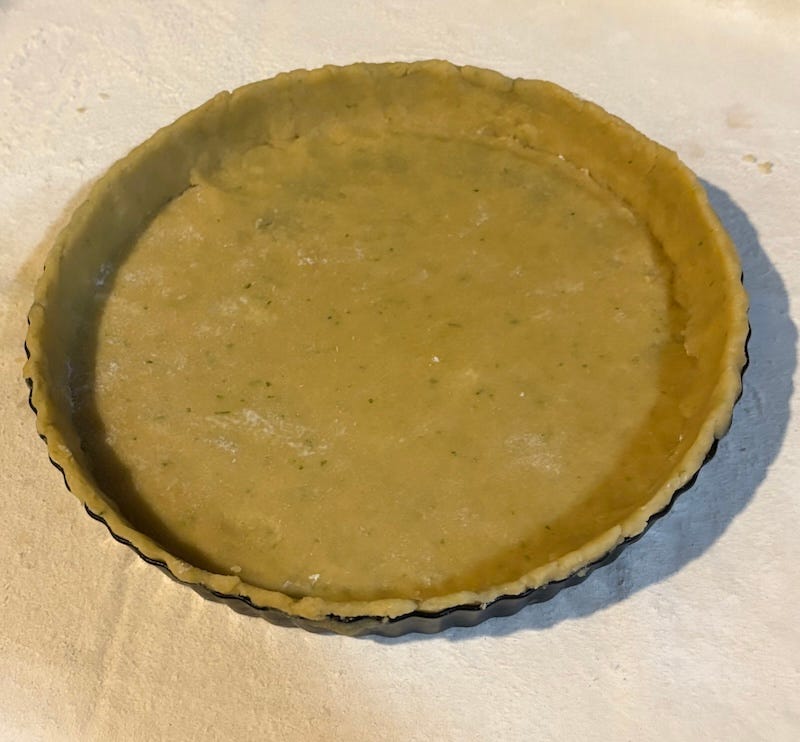
Adjust an oven rack to the center position and preheat the oven to 375 degrees.
Roll the smaller piece of dough on your lightly floured surface to a 10-inch circle. Cut the dough into 1/2-inch wide strips.
Whisk the ricotta filling a few times and pour into the pastry-lined pan.
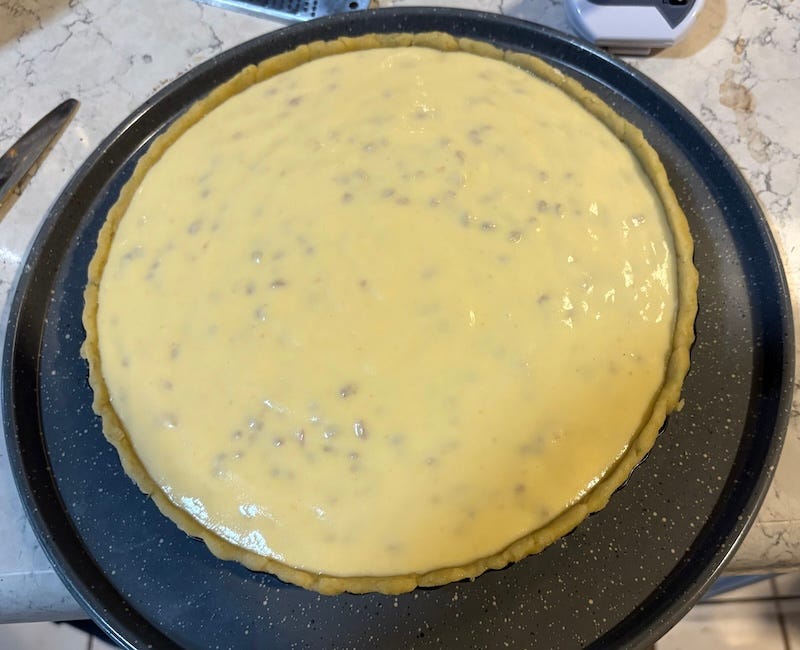
Carefully lay strips of dough on the filling to make a diamond pattern. Three or four strips in each direction should do it. Cut off overhanging pastry. Gather up scraps and add to the first batch of scraps. Shape into a disk, rewrap, and refrigerate. Leftover dough makes great cookies!
6. Bake 40 to 50 minutes, until the filling is set and jiggles a bit only in the center. Cool completely on a wire rack, 2 to 3 hours.
7. Serving. Pastiera is usually served plain. Cut into portions and set them on dessert plates. I usually add a few berries for color and taste. Store leftover pastiera in the fridge. Bring to room temperature before serving.
A final note: In a pinch you can buy cans of cooked wheat to make pastiera. The contents of the can replace the cooked farro. Just cook it further following the instructions in steps 3 and 4 above and it’ll be ready to pour into your pastry shell. Look online to find sources for the cooked grain.
Happy Baking!



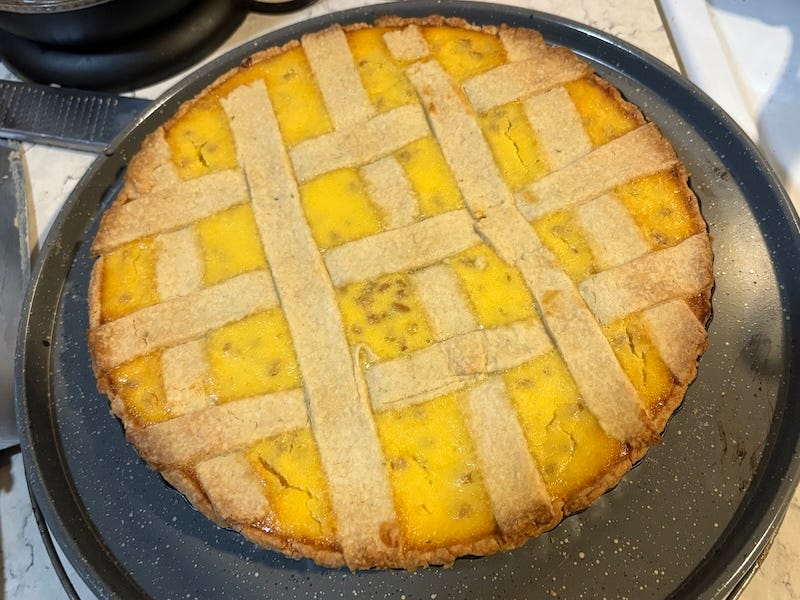

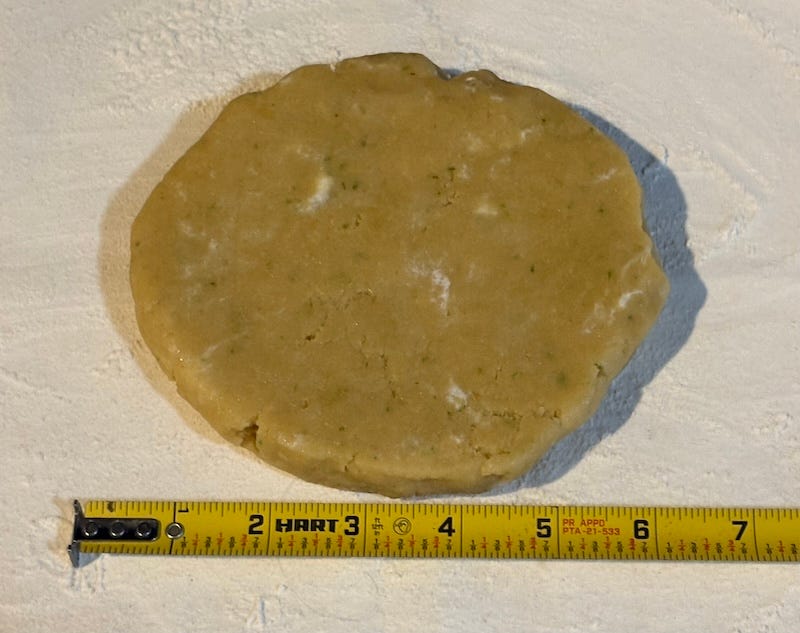

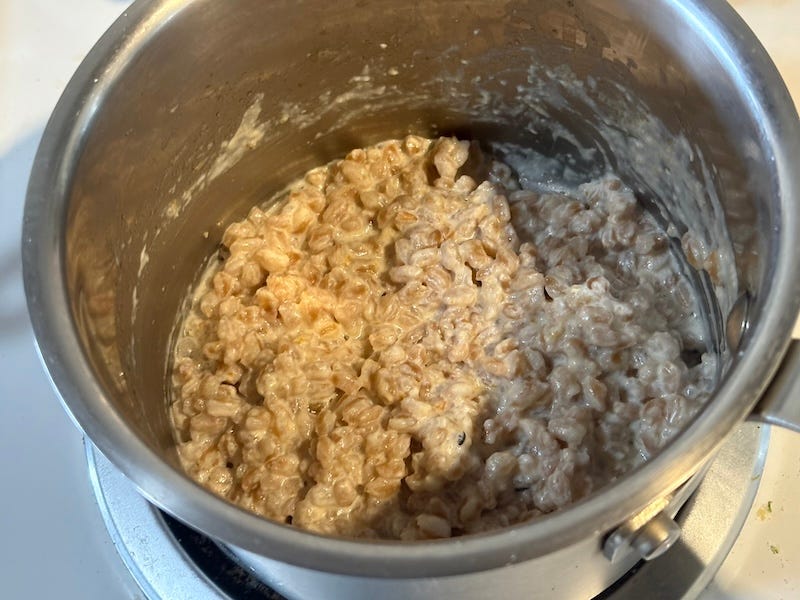
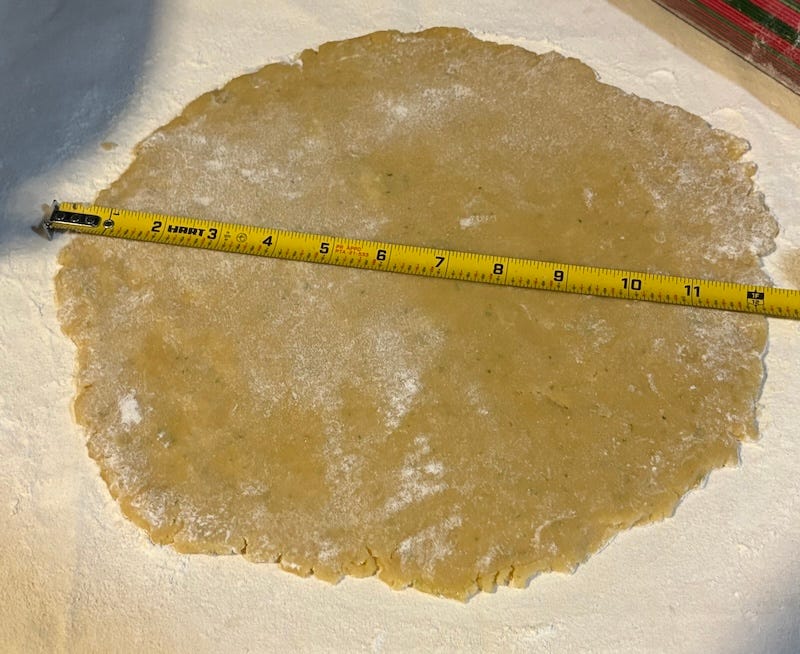
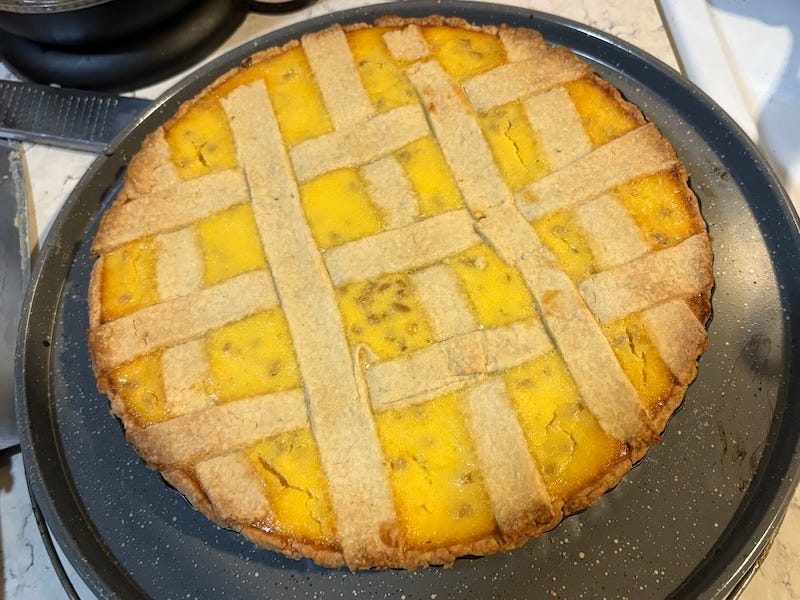

THANKS so much for posting this wonderful recipe! i know there are many around in the web, but yours is THE best!